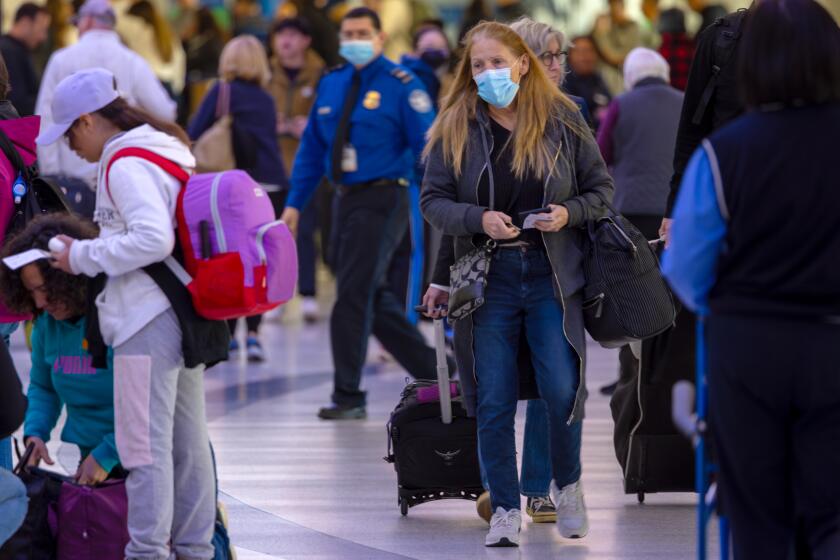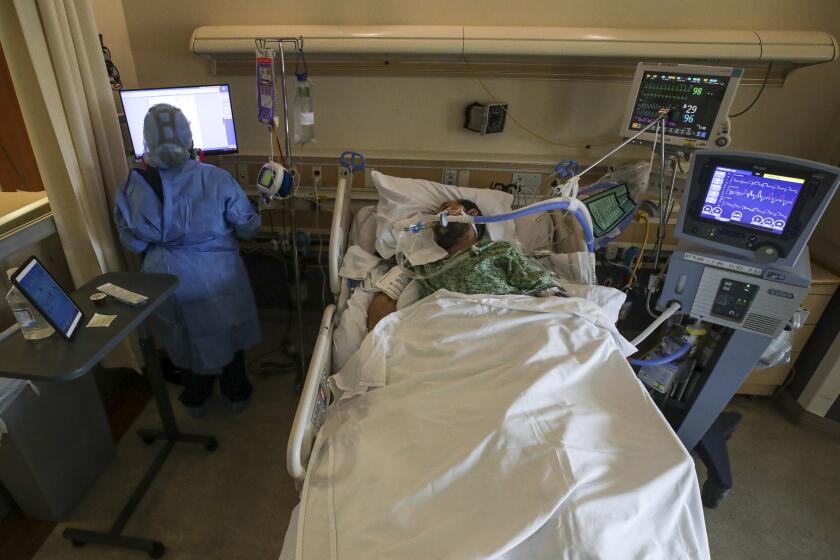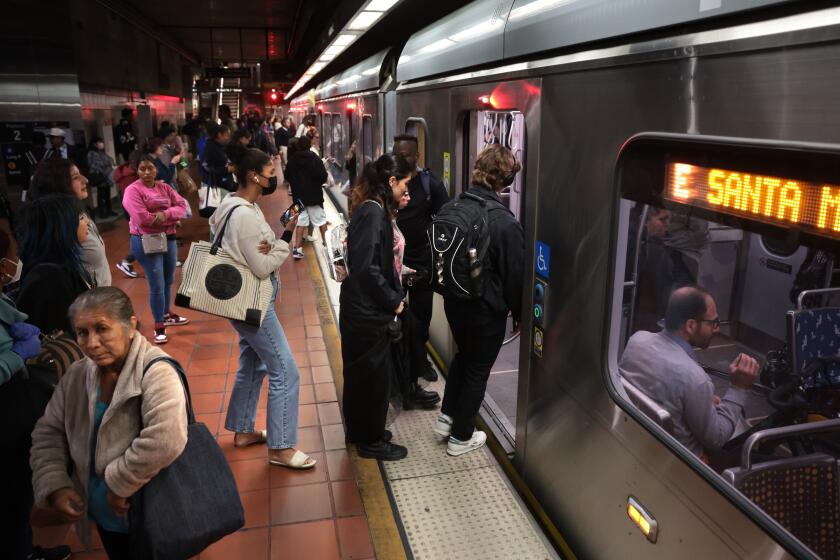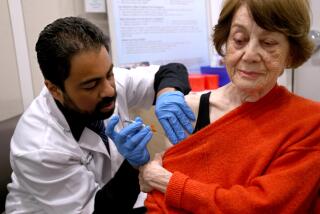New COVID subvariants are rising: How bad will California get hit this summer?
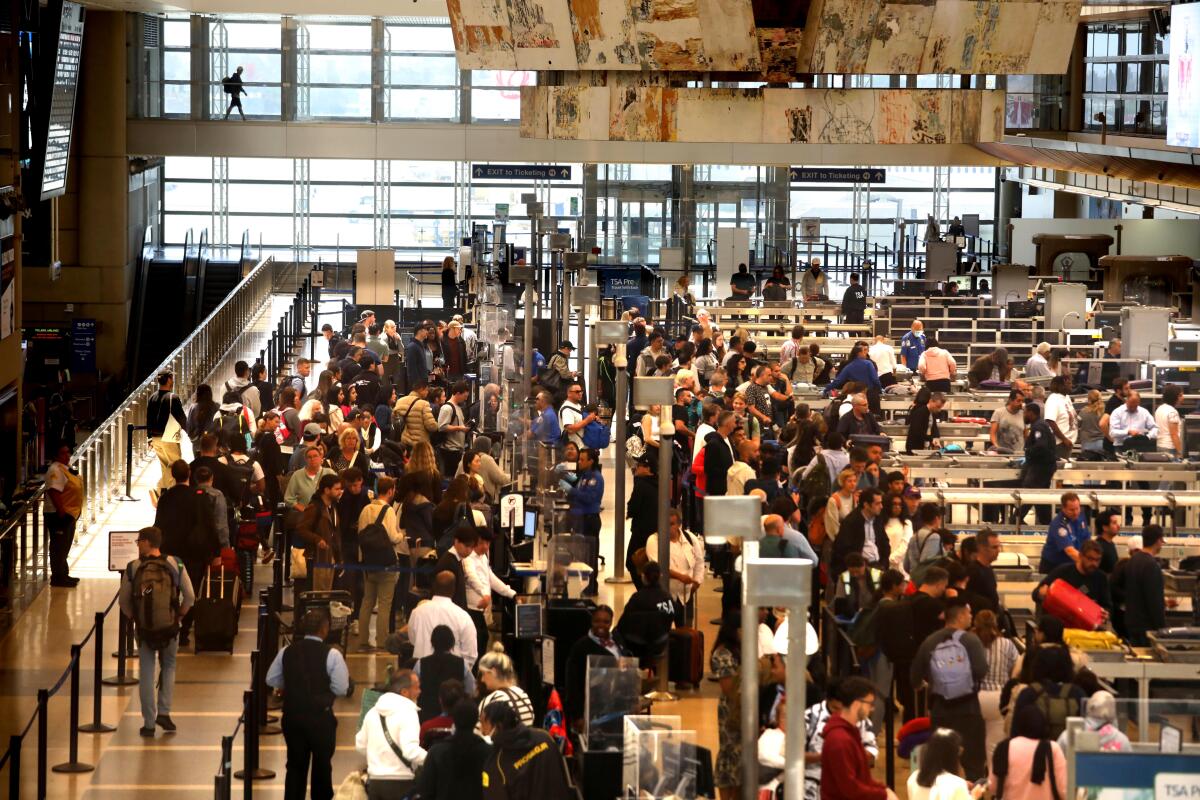
- Share via
As the new FLiRT family of coronavirus subvariants takes hold, early signs are pointing to a summer jump in cases.
So how bad could it get?
Experts so far are cautiously optimistic, saying the numbers are within expectations and there currently are no signs of any red flags.
But the new variants are a reminder that the coronavirus remains a major health risk for some, even as much of the world has tried to move past the pandemic. While California’s COVID numbers look relatively good, officials say FLiRT’s rise shows the need to stay vigilant with basic safety measures.
“For the majority of people, it is not a big deal. But for some people, it is a big deal,” said Dr. Peter Chin-Hong, a UC San Francisco infectious disease specialist, speaking of COVID-19. “I’m always cautious around the elderly, particularly as their immunity drops, with more cases.”
In years past, summer travel and gatherings have spurred surges in coronavirus infections. As immunity wanes for those who received the most recent vaccine, experts urge caution.
And COVID can still cause life-altering symptoms for younger adults too.
“COVID is not a regular flu or cold,” said Dr. Elizabeth Hudson, regional chief of infectious disease at Kaiser Permanente Southern California. “It can have long-lasting effects, with long COVID symptoms, that make it very different from other viruses we encounter,” adding that people in their 30s and 40s seem to be more likely to get long COVID.
In terms of the new subvariants, experts generally believe they are more contagious than earlier strains, which explains why they’re crowding out winter’s dominant JN.1.
And unlike the annual fall/winter cold-and-flu season, COVID has presented itself as having two peaks every year — with one of them in the summer.
California’s COVID waves last summer and winter were still big enough to cause significant disruptions, including outbreaks in schools, among sports teams and at Hollywood studios, while some businesses saw higher numbers of workers calling in sick.
And the risk can remain severe for those who are older or immunocompromised. COVID-19 is still killing people at a higher rate than the flu, with more than 43,000 deaths reported since Oct. 1, compared to an estimated 25,000 for the flu. Based on CDC data in February, more than 95% of those hospitalized with COVID-19 had not received the updated vaccine, which was introduced in September.
This past winter, the mortality rate for patients hospitalized with COVID-19 was 35% higher than for patients hospitalized with the flu.
But for COVID-19 to become a health scare again, there would have to be a distinct change in hospitalizations and deaths. COVID deaths have continued to decline: For the 12-month period that ended at the start of spring, there were about 66,000 deaths nationally, half as many as the prior comparable period.
And that is significantly down from the prior year, when there were 438,000 COVID-19 deaths between spring 2021 and winter 2021–22. There were 554,000 deaths for the pandemic year that began in spring 2020.
But even with lower deaths there can be a high number of infections, which may not be serious enough to require hospitalization, but can still result in wide-ranging disruptions to daily life — from canceled vacations and interrupted weddings to worker shortages due to illness.
Those who fall ill can still suffer from the unpleasantness of being acutely sick for weeks.
Hudson said she is seeing most new COVID-19 cases among outpatients, rather than those needing hospitalization.
It’s too early to know if FLiRT will be a major change in the COVID picture; so far impacts have been small. But officials are urging Californians to be prepared.
How bad a COVID increase could get this summer remains unclear. But there are indications of an earlier-than-normal start to the COVID summer season.
The California Department of Public Health has noted that the rate at which COVID tests are coming back positive has been slowly increasing during the past month. For the seven-day period that ended Monday, 4.8% of coronavirus tests came back positive in California; a month ago, the rate was 1.9%. Last summer’s peak was 12.8%, at the end of August.
The agency has also noted that viral levels in wastewater have suggested increases in several regions of the state. Virus levels in the sewage of most of Northern California’s most populous county, Santa Clara County, is now considered “high” for the first time since winter.
An uptick in COVID cases in Los Angeles County also continues. On Thursday, the L.A. County Department of Public Health said it saw 93 to 100 coronavirus cases a day for the week that ended May 22, the most recent data available. There were 60 to 80 new cases a day between March 25 and May 9. The counts reflect tests conducted at medical facilities and do not include home tests or people who don’t test.
“It’s still too soon to tell if this small increase in recent weeks will become a sustained uptick, as the case counts are low and the day-to-day trends vary,” the Health Department said in a statement to The Times.
For the week that ended May 18, the most recent period for which data was available, coronavirus levels in L.A. County sewage were at 11% of last winter’s peak, up from 9% the prior week.
Because most of the increase in COVID cases isn’t among people who are hospitalized, “this is good news as it means we have the capacity to care for other patients in our hospitals,” Hudson said. “Most of these ambulatory cases are presenting with usual cough-and-cold symptoms, so it’s important for everyone to test themselves if they develop these types of symptoms.”
By the Fourth of July, we may get a better feel for how bad this summer could be, she said.
“So far, we’re not seeing signs of a larger wave,” Hudson said. “In years past, the COVID summer waves have tended to crest around July 4, so we have some weeks until we’ll know for sure what this wave may fully look like.”
While COVID levels in California wastewater declined during the last two summers, they actually rose between the winter of 2022–23 and last winter, thanks to a particularly contagious variant.
Wastewater data suggested last winter’s COVID wave — in terms of virus levels in sewage across California — was the worst since the first Omicron wave began in the fall of 2021.
L.A. County, however, bucked that trend. Coronavirus levels in wastewater last winter there were lower than the prior season’s.
“Whether or not COVID cases continue to decrease this summer compared to 2023 will depend on multiple factors, including variant transmissibility, preexisting immunity, and vaccination coverage,” the Los Angeles County Department of Public Health said in a statement to The Times.
It’s especially important that the elderly and the immunocompromised get at least one COVID-19 vaccine dose since the formula was last updated in September, Chin-Hong said.
The U.S. Centers for Disease Control and Prevention says everyone 6 months and older should have gotten at least one updated shot since September, and two shots for seniors age 65 and up who are four months out from their first updated dose.
More to Read
Sign up for Essential California
The most important California stories and recommendations in your inbox every morning.
You may occasionally receive promotional content from the Los Angeles Times.
